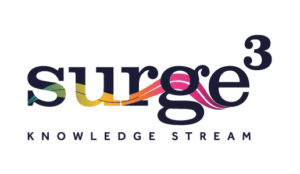You’re probably familiar with the concept of a ‘skunkworks’ … an “environment that is intended to help a small group of individuals design a new idea by escaping routine organizational procedures”. The term originated during World War II when the P-80 Shooting Star was designed by Lockheed’s Advanced Development Projects Division in Burbank, California. The term has been generalized to apply to high-priority R&D projects at large organizations which feature a small team removed from the normal working environment and given freedom from management constraints. Other famous skunkworks have included the Apple lab of about 50 people – behind the Good Earth Restaurant in Cupertino – established by Steve Jobs to develop the Mac computer. The skunkworks is a great example of a big company trying to think like an SME.
At the end of last year Ikea announced a plan to streamline its management to help rediscover its entrepreneurial spirit. It had become too slow and bureaucratic. Ingka Group, Ikea’s parent company, is a behemoth … employing 160,000 people across 30 countries. Ingka’s management realised that it had evolved a structure that made it harder to make quick decisions close to the customer. It’s redesign was intended to make Ikea more simple and efficient, shorten the decision-making process and make it more agile.
So often we talk about what SMEs can learn from their larger brethren, but actually this should be a two-way street. Big companies are inherently complex beasts, but their size doesn’t have to lead to sclerosis! Big companies may look enviously at some of the traits of smaller companies – their agility, flexibility and focus – but they can’t just pretend to be small and nimble. They must actually be able to act small too. ‘Thinking Small’ may well be the next corporate strategy!
So what can big companies learn from SMEs? Here are a few thoughts …
1. Customers are precious: treat them as individuals and with the mindset that your future existence depends on keeping each and every one of them happy. Zappos is a great example of a $2bn business acting like a small company when it comes to interacting with its customers. “it is a daily quest for every Zapponian to “WOW” our customers in new and wonderful ways”. Zappos famously empowers its employees to deliver best in class customer service. Huge companies can still feel authentic and approachable if they allow their employees – the ones who are genuinely local to their customers – to express themselves and tailor how they deliver, present and manage their products or services.
2. Think fast – make key decisions more quickly: Many large businesses are characterised by silos and bureaucracy … needing time to make decisions, which often means stifling or slowing down key decision making. In streamlining its management, Ikea is looking to address a slow and bureaucratic decision-making process. By stripping out layers of management it aims to become more agile. For businesses that can’t ‘just’ strip out layers – skunkworks sidestep this issue by creating this more agile environment outside of the parent business
3. Encourage risk taking – finding a better balance between defensive and offensive behaviour – smaller companies may be more focused on breakthroughs rather than incremental change, and managers in larger corporations are more concerned about loss avoidance or avoidance of failure (as this would negatively impact their career).
4. If the current rules don’t suit, then move the goalposts – Large businesses focus on doing the best they can within the accepted ‘rules’ of the market they operate in. If the rules need to be bent, broken or completely rewritten to move forward, or to make the most of limited resources – then SMEs are more inclined to create new rules.
Hyatt learnt this lesson – In 2016 it announced the launch of its Unbound Collection, an Airbnb for independent boutique hotels. This global collection of unique and independent stay experiences maintained a distinct character while providing guests and owners Hyatt’s award-winning customer loyalty program, robust operational and marketing resources and trusted, quality brand. Their market is being disrupted and they must adapt. This “old economy” company identified its core strengths to which it could apply “new economy” rules.
5. Ensure all employees understand the business model – In SMEs, it’s more likely that everyone understands how the company works and how customer value is generated and delivered. In larger companies, the corporate knowledge base tends to be more fragmented and so fewer people understand the business model holistically. The advantage for SMEs is that it is easier to get everybody to sign-in, to move in the same direction and to feel ownership
Decision Architects have spent many years exploring the SME sector – how to define it, how SME owners see the world, what lessons can be learnt. For more information see our recent presentation



